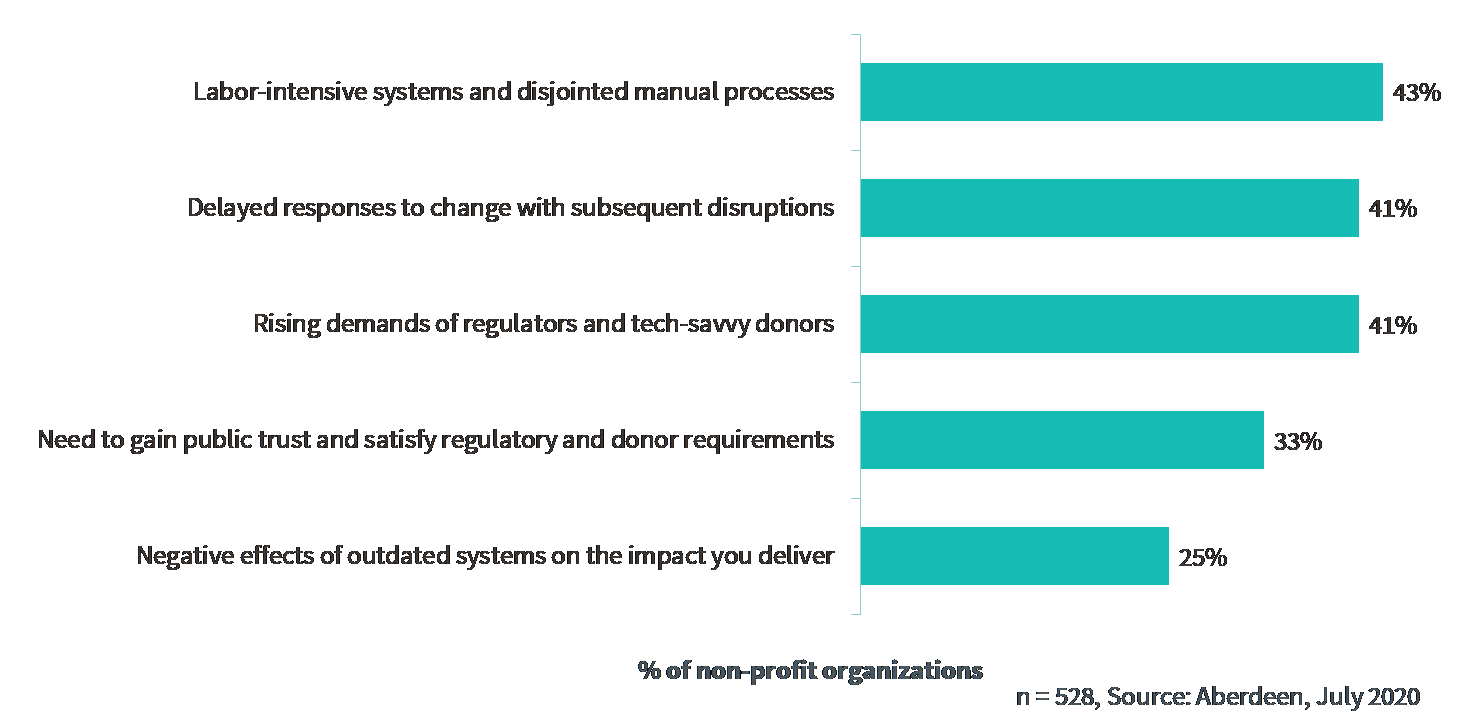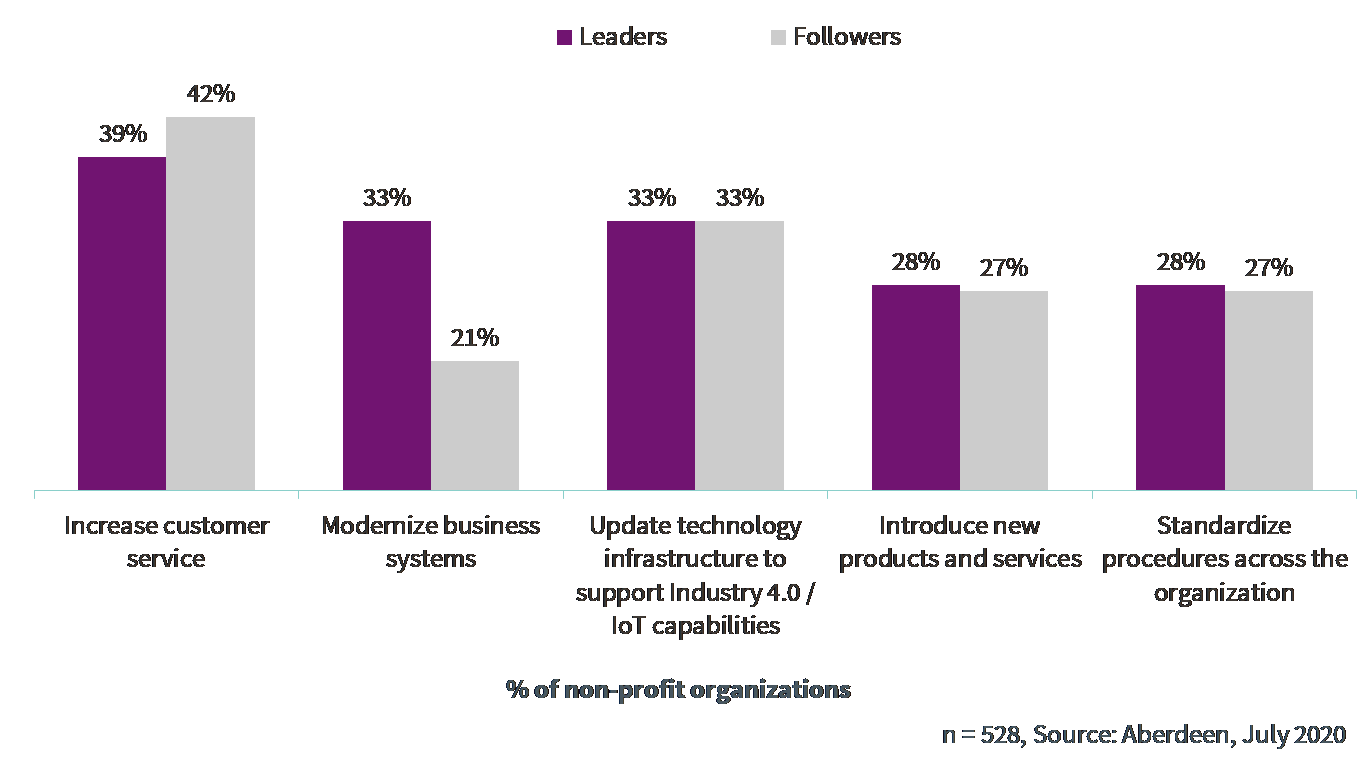
Revitalizing finance operations: Why now is the time for nonprofit organizations to upgrade their back-office capabilities
Between donation management, government funding, and tax-exempt accounting, finance departments within nonprofits face different challenges than those in other industries. Without proper funding, many nonprofit organizations have historically relied on spreadsheets and other manual methods as well as disparate and homegrown applications for keeping track of finances.
In 2016, 7% of organizations in the nonprofit sector were exclusively using spreadsheets / manual methods to run their business. This percentage climbed to 21% in 2018 as organizations grew rapidly, and donations were spread thinly across different business divisions. Today, less than 1% of nonprofit organizations are using spreadsheets for their financial operations.
Manual methods have led to a lack of accuracy in financial reporting, a lack of automation for repetitive processes, and a lack of efficiency across the nonprofit sector. And even though almost all nonprofits have moved away from relying on spreadsheets for their financial operations, many are still struggling with the fluidity and transparency of their processes. But why now, in the midst of the economic downturn from the COVID-19 pandemic, are nonprofits focused on bolstering their finance departments?
Adapting to the new business environment all organizations find themselves in today may require investments in new technology. Employing best practices and rejuvenating finance teams prepares nonprofits to scale their operations and succeed in serving their communities — even during times of economic uncertainty.
Nonprofits are struggling with labor-intensive, outdated technology
Fragmented internal operations often lead to negative customer experiences. Without a centralized data system to connect various teams, organizations struggle to keep workflows running smoothly and deliver high-quality projects on-time. Manual and disconnected processes are the root of many challenges for nonprofit organizations (Figure 1).

Manual processes are extremely labor intensive and must be repeated constantly — costing the organization valuable time and money that could be utilized elsewhere. The additional time required for these manual processes impacts an organization’s ability to respond to changes quickly and inexpensively; 49% of nonprofit organizations do not have the ability to automatically notify decision-makers when scheduled activities fail to occur on time or when certain conditions occur. This lack of visibility into the changing business landscape makes decreases in demand and disruptions in workflows difficult to detect, leaving unprepared organizations vulnerable to financial uncertainty.
For these reasons, nonprofits are targeting their outdated business systems and disjointed workflows for improvement in 2020.
Modernizing business systems is a top goal for leading nonprofit organizations in 2020
Leading nonprofit organizations have highlighted modernization of business systems, increasing customer service, and standardizing procedures as top priorities for 2020. They are looking to upgrade their current solutions to evolve from document-based processes into automated, agile organizations powered by innovative technology (Figure 2).

Productivity and customer relationships are strong motivators for nonprofits. They are constantly seeking new ways to do more with limited funds in order to better serve their clients, staff, and communities. Modernizing finance back-office processes can help nonprofits free up resources that can be utilized elsewhere and help design more accurate models for predicting clients’ needs.
Standardizing procedures across the organization can also increase productivity. Clear channels for communication and collaboration and established project management guidelines allow for seamless adjustments and reduce the frequency of disruptions. Adaptable workflows help projects stay on-time and on-budget, which translates to greater customer satisfaction.
Nonprofits are recognizing the negative effects of outdated financial systems
Nonprofit organizations may have started their journey away from manual operations, but without innovative tools to identify and reduce potential issues, notify decision-makers, and plan courses of action, they are struggling to execute on projects and keep their clients and donors happy. Nonprofit leaders, in particular, have recognized this fact and are aiming to reinforce their finance technology.
But again, the question arises: Why now? The reason is that recovery is an important time for development. As nonprofits are reassessing their needs and reallocating their donation dollars, they are noticing the impact automation and other innovative technology can have on their business operations. Fortifying budgeting and planning with powerful organizational and predictive tools will set a high standard of productivity. Employees will feel empowered by greater visibility into current projects and future opportunities, and organization leaders will feel confident in their decision-making abilities.
Now — as nonprofits are optimizing their processes and cutting down on wasted time and unnecessary costs — is the perfect time for finance teams to build up their infrastructure and prepare for success.





